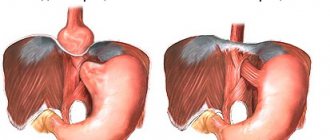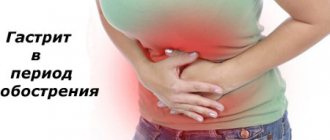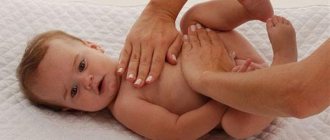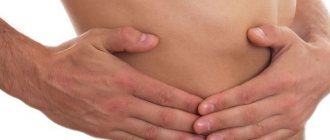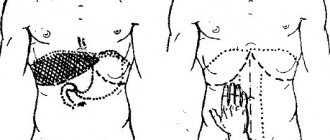Description
Inguinal hernia (ICD-10 code - K40) is the exit of the internal organs of the abdomen, covered with peritoneum, through the opening of the inguinal canal. In men, the latter is a cavity through which the spermatic cord passes - this anatomical structure is responsible for the blood supply to the testicle, and also transports sperm from the place of their production to the initial part of the urethra during ejaculation.
Pathological protrusion has 3 components:
- hernial orifice - the inguinal ring through which organs exit the abdominal cavity;
- hernial sac - a sheet of peritoneum that covers the protruding organs from the outside;
- hernial contents - intestinal loops, omentum, bladder and other organs that are trapped in the hernial sac.
Depending on the location, hernias are divided into direct and oblique.
This is important for the doctor during surgery. Based on the time of occurrence, congenital and acquired forms are distinguished, each of which can be unilateral or bilateral (rare).
Main reasons
The main local development factor is the presence of a weak spot in the anterior abdominal wall, which is represented by the opening of the inguinal canal. Through it, in the presence of other reasons, organs can partially slip out of the abdominal cavity and form a protrusion under the skin.
For doctors, common factors are of great importance. They are divided into:
- predisposing - increase the risk of developing a hernia throughout life;
- producing - become the direct cause of the exit of organs from the abdominal cavity.
Predisposing factors include: heredity, pathological changes in connective and muscle tissue. In young men, hernias can be one of the manifestations of collagenosis.
List of producing factors:
- frequent constipation and straining to go to the toilet;
- diseases accompanied by chronic cough;
- hard physical work;
- regular lifting of weights;
- constantly wearing tight belts;
- sudden weight fluctuations;
- weakening and sagging abdominal muscles;
- abdominal surgery;
- abdominal injuries.
Diagnosis of inguinal hernia in men: what methods are used?
The doctor receives valuable information by palpating the anterior abdominal wall with the patient standing and lying down. To make the bulge more noticeable, the surgeon may ask the man to tense his abdominal muscles, strain, or cough. After identifying the formation, the doctor performs percussion (tapping) and auscultation (listening) over it. If an omentum gets into the hernia, the sound will be dull, and if an air-filled loop of intestine gets in, tympanitis will sound (louder).
For 100% diagnostics, instrumental research methods are prescribed:
- Ultrasound of the hernial protrusion and abdominal cavity - helps to detect the contents and determine which organs are in the hernia;
- radiography of the gastrointestinal tract with a contrast agent to study small formations, especially in obese people, when ultrasound does not provide reliable information;
- cystography (contrasting of the bladder), if the doctor suspects that this particular organ has entered the hernial sac.
Before the operation, a standard set of diagnostics is carried out: clinical blood and urine tests, coagulogram (determination of clotting), analysis for viral hepatitis and HIV infection, consultation with a urologist and therapist.
Folk remedies
There are folk recipes for treating this disease. But, before using them, be sure to consult your doctor.
- Rhubarb root. In the fall, you need to dig up rhubarb roots, wash, dry and chop. Fill a glass of crushed roots with about 2 liters of water and place in the oven to simmer for 3-4 hours. Take the decoction instead of tea or compote regularly every day.
- Horsetail and hernia. Brew and drink these herbs as tea regularly. It is important to remember that these herbs cannot be mixed, so alternate use as follows: drink horsetail for a week, and hernia the next week.
- Sea buckthorn oil. To some extent, this problem can be treated with oils, especially sea buckthorn oil. Rub it gently into the hernia several times a day. Do this carefully so as not to damage the protrusion.
- Animal fats. It is necessary to rub badger, pork or goat fat into the bulge. It is very convenient, after rubbing the medicine, to put polyethylene on the sore spot and put on a bandage.
- Baths with a decoction of celandine. Make a rich decoction of celandine herb and pour it into the bath. Take this bath for at least 20 minutes every day. The course of treatment is a month.
- Compresses. Regularly apply oak bark compresses at the site of the hernia. Grind oak bark, leaves and acorns. Fill the container 2/3 full with the mixture and add red wine on top. Leave the mixture for 3 weeks. Do compresses 2 times a day for 30 minutes.
- Sauerkraut compress is also used in the fight against inguinal hernia. To do this, regularly apply gauze soaked in brine or leaves of sauerkraut to the sore spot every day.
This disease is difficult to cure with folk remedies. The only thing you will achieve with these recipes is pain relief. Remember that it is very important to seek qualified medical help in time to avoid serious consequences of an advanced hernia.
What does an inguinal hernia look like in men in photos and ultrasound?
Visually, an inguinal hernia looks like a kind of bulge rising above the skin in the human groin area. The photo below clearly shows how this pathology can be recognized:
And this is another photo of a hernia in a man’s groin:
Below is a photo of what an inguinal hernia looks like in men on an ultrasound (ultrasound):
You have something like this (anonymous):
Yes
53.85%
No
46.15%
Voted: 13
Bottom line
An inguinal hernia is a pathology that cannot be cured with conservative methods. Without proper treatment, it becomes complicated in 20% of cases, and almost always significantly worsens the quality of life of the person suffering from it. The only effective tactic to combat a hernia is surgery.
Modern endoscopic and open interventions guarantee relief from PGR, and along with it, from all the unpleasant symptoms that it manifests itself. If you suspect you have a hernia, then the surest step you can take is to visit a surgeon.
Esophageal hernia: symptoms and treatment methods Varicocele: what is it and how to treat varicocele in men Candidiasis in men – what is it and how to treat it? Osteochondrosis – what is it and how to treat it?
Is treatment possible without surgery and when?
Surgery is not performed if a person has absolute contraindications. In other situations, the help of a surgeon is the main and only radical method.
Treatment of inguinal hernia in men without surgery involves preventative and symptomatic rather than actually working remedies.
It is important to understand that without the participation of surgeons it is impossible to get rid of the protrusion and return to an active life. If you delay going to the doctor, there may be life-threatening complications.
Drugs
Tablets cannot cure a hernia, but they can relieve symptoms. For severe pain, analgesics from the NSAID group (analgin, paracetamol, ibuprofen) are recommended. If a man suffers from regular constipation, he is prescribed laxatives (Bisacodyl, Lactulose, Psyllium) to facilitate bowel movements.
Physiotherapy
Exercises for the prevention of inguinal hernia in men and recommended in the late postoperative period.
If a man has a hernial protrusion, any load on the abdominal muscles is contraindicated for him. They can aggravate the problem and cause harm.
Training is allowed either to prevent the disease, or in the late postoperative period to strengthen overstretched muscles.
For this, classic exercises are used: twisting from a supine position, “bicycle”, “scissors”, circular leg swings.
Nutrition
Following a diet cannot cure a hernia, but it can prevent its progression and such a terrible complication as coprostasis. The basic rule of the diet is to add more vegetables and fruits rich in fiber, as well as fermented milk products.
These measures are aimed at increasing the volume and normalizing the consistency of stool, and help cope with persistent constipation. The diet of a man with an inguinal hernia should contain a minimum of simple carbohydrates (sugar, baked goods, sweets), fatty and “heavy” foods.
Folk remedies: be careful
Self-medication of hernias at home is unacceptable. Folk remedies and methods are not able to eliminate the abdominal tissue defect. They only aggravate the pathology and are fraught with life-threatening complications. They can have an unpredictable effect + time is wasted on actually solving the problem.
What else
For reducible inguinal hernias, a bandage that holds the gastrointestinal tract inside the abdominal cavity can help. However, it should not be worn for too long, since squeezing the hernial protrusion can cause inflammatory processes and complications. The bandage is suitable for patients who are already scheduled for surgery and need to wait a few weeks for it, or for those who have had surgery to prevent relapse.
Price: 1000-200 rubles (depending on the specific model).
Rehabilitation period
After surgery to remove an inguinal hernia, the patient spends 2 to 10 days in the hospital. It all depends on how dangerous the hernia was and how successfully the operation went. A few days after the classic operation, it is necessary to regularly make dressings, and after 10 days the patient will have the stitches removed.
Painful sensations persist for another 5-7 days. Remember that bed rest is necessary for the first days. After 2 months, you can do light exercises for the abdominal muscles.
It is important to know that people who have undergone surgery to remove an inguinal hernia are prohibited from lifting more than 5 kilograms.
For the first time after surgery, a special diet is recommended. It is aimed at not loading the gastrointestinal tract. In the first days after surgery, you need to eat liquid food: soups, broths, liquid cereals and purees. In the first month of the postoperative period, exclude spicy foods, fatty meats, legumes, baked goods, and carbonated drinks from your diet. All of these foods can cause fermentation in the intestines, bloating or constipation.
Why is an inguinal hernia dangerous for a man: complications
If diagnosis and treatment are not carried out in time, the following consequences are possible:
- irreducibility of the hernia, which occurs due to the formation of constrictions of connective tissue between the organs and the hernial sac;
- strangulation is a serious complication in which blood circulation in the contents of the inguinal hernia stops and tissue death occurs;
- coprostasis - stagnation of feces in a loop of intestine that has entered the hernial sac, fraught with intestinal obstruction and peritonitis;
- inflammation of the damaged area of the abdominal wall and organs.
Removal operation
The use of self-medication can temporarily relieve symptoms and improve well-being, but surgical intervention is necessary to eliminate the hernia. There are several options for operations for inguinal hernial protrusions, the features of which are collected by specialists from the MalePotency.ru website in the form of a table.
| View | How it goes | How long does it last | average cost |
| Hernioplasty with tissue tension | Through an incision in the groin area, the surgeon realigns the organs and then strengthens the weak spot with the patient's muscles and tendons to prevent relapse | 30-60 minutes | 15000-30000 rub. |
| Hernioplasty using a mesh prosthesis | After repositioning the organs, the surgeon installs a mesh into the opening of the inguinal canal, which prevents the contents of the abdominal cavity from escaping. | 1 hour | 30000-125000 rub. (depending on the type of prosthesis and degree of complexity) |
| Laparoscopic hernioplasty | The same volume of surgery is performed as in the previous version, but instead of a large incision, the surgeon makes 3 neat punctures, making the scars almost invisible | 1-1.5 hours | About 100,000-150,000 rubles. |
Danger level
A correctly performed hernia operation does not pose a risk to the body if the necessary tests and preparations have been made before surgery. Some patients may have problems recovering from anesthesia or complications of chronic diseases due to the use of anesthesia drugs.
Recovery
In the first 5-10 days after eliminating the formation, the patient is bothered by slight pain and discomfort in the affected area.
To eliminate them, painkillers are prescribed. The patient can return to active life on average a week after the operation, but physical activity on the abdominal muscles is prohibited until complete rehabilitation, which takes several months.
To prevent relapses after surgical correction, doctors recommend that the patient wear a special bandage. It maintains the abdomen in the correct position, prevents the muscles from sagging and promotes rapid healing of the scar.
Consequences (relapse)
The likelihood of negative consequences, that is, relapse, depends on the chosen method of surgery.
With classical intervention with self-tension, relapse occurs in 25% of patients, and after strengthening the hernia with mesh, complications occur in no more than 1% of people. The laparoscopic technique is recognized as the best option for uncomplicated forms of inguinal hernias - it extremely rarely causes relapses.
The reappearance of a protrusion in the same place can occur under the influence of the following factors:
- non-compliance with medical recommendations, early start of physical activity in the postoperative period;
- sagging tissue of the anterior abdominal wall and/or the presence of multiple scars in this area;
- wound infection - during or after surgery;
- use of unmodern methods of surgical correction.
When an inguinal hernia recurs, the same symptoms occur as with the primary disease. The pathology requires immediate consultation with a surgeon and selection of the optimal type of operation, since it cannot be treated conservatively.
Reviews
Most patients who have undergone hernia surgery with mesh installation leave positive comments. They note that such surgical intervention gives a reliable result, the sutures heal quite quickly. Subsequently, men return to their usual physical activity and even sports training.
Symptoms
Photo: static.103.ua
In most cases, the first sign of the disease that the patient pays attention to is the appearance of a tumor-like protrusion in the groin area. This protrusion can be of various sizes, an increase in which is observed during physical activity, lifting weights, and coughing. A decrease in the size of the tumor-like formation or its complete disappearance is noted in a horizontal position. The presence of a bulge in the groin is accompanied by pain in the lower abdomen or in the groin area. The pain is dull and varies in intensity. In addition, pain can radiate (give) to the lumbosacral region or hip. When an inguinal hernia reaches a large size, discomfort occurs not only during physical activity, but also when walking.
The appearance of constipation, bloating (flatulence), discomfort or pain in the abdomen may indicate the content of the cecum in the hernial sac. In this case, the development of inflammation of the appendix is occasionally noted, which is accompanied by a characteristic pain syndrome, as well as the development of symptoms indicating general intoxication of the body. With sliding hernias of the bladder, the following symptoms are noted:
- increased urination;
- discomfort or pain in the suprapubic area;
- pain in the urethra, which increases with urination;
- Older people may experience urinary retention.
With an inguinal-scrotal hernia, there is a significant increase in the size of the corresponding side of the scrotum, which is accompanied by the appearance of pain and discomfort in this area.
In women, the ovary and fallopian tube may enter the hernial sac. This phenomenon is accompanied by pain during menstruation.
When a hernia is strangulated, causing it to become tense and unreducible, sharp pain appears in the groin area, nausea, and vomiting, which is often one-time. As the process progresses, ischemia develops, and then necrosis of the strangulated area of the intestine or other elements of the hernial sac.
